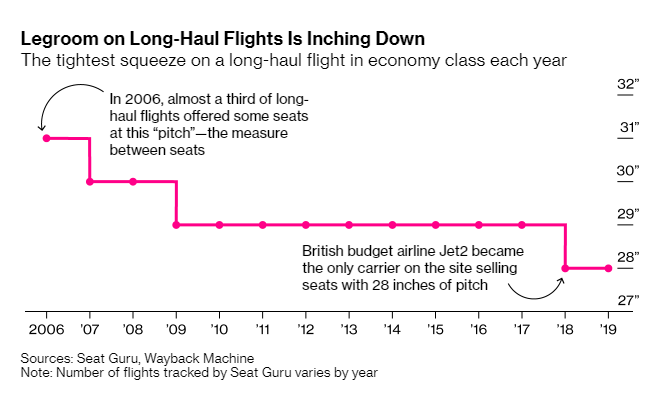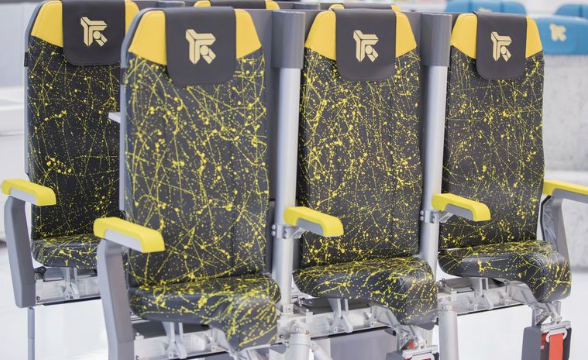Just when you thought flying coach couldn’t get anymore uncomfortable – and that airline companies couldn’t find a way to squeeze one more dollar out of each flight – Cebu Air in the Philippines says it plans on cramming a record 460 seats on some of its new A330 planes, according to Bloomberg. Cebu is moving kitchens and bathrooms on the plane to accomplish the task.
The 460 seats are 20 more than the plane’s current maximum.
Mathieu De Marchi, a Bangkok-based consultant at Landrum and Brown said: “It’s all a matter of squeezing as many passengers as they can. It’s only going to get worse over the next decade.”
And despite the protests of unhappy customers, packing more people onto flights has been a key to turning around the airline industry in recent years. In Asia, the strategy is the “bread and butter for low cost carriers” that serve a continent where 100 million people fly for the first time every year.
The demand coming out of Asia has led to shortages in everything from pilots to mechanics to airports to runways. Airlines do everything they can to avoid buying new aircraft and having to pay for extra landing rights at airports.
AirAsia is buying larger planes to deal with the problem. The budget airline said in June it was changing an order for hundreds of aircraft to larger models that carry 50 more people and are capable of flying 600 miles further. Other airlines are simply “bolting in more chairs,” like RyanAir. RyanAir led this charge in 2014 when they ordered new high density jets from Boeing with 8 more seats each than normal. Cathay Pacific airlines started cramming an extra seat into each economy row in its Boeing 777-300’s in 2017.
This cost the passengers about 1 inch of person space each.
And so less legroom is now the norm. Rows in economy were about 34 inches apart in the early 2000’s. Now, they’re about 30 to 31 inches. 28 inches can even be found on short flights. The size of seats has narrowed, also, from about 18.5 inches to 17 inches on average.
Often times, air rage occurs in economy class, where a lack of personal space can make people feel trapped and contentious.
Janet Bednarek, an aviation historian at the University of Dayton, Ohio, said: “Smaller seats are less controversial in Asia, partly because Asians tend to have slighter builds than Americans or Europeans. Where people are smaller on average it is not as big an issue. Many people are willing to put up with discomfort in exchange for low-price tickets.”
In addition to personal space shrinking, prices have also come down. For instance, some international flights now cost less than half of what they did a decade ago, as competition from low cost carriers has forced all airlines to adapt, and charge for many items that were once free – including space.
For instance, a one way ticket from Shanghai to Manila can be less than $100 on Cebu Air. But the seats you’ll get are only 16.5 inches wide. Cebu placed a $6.8 billion order for Airbus jets in June that includes 16 higher capacity A330neos.
Airbus says the plane is made to fit 260 to 300 passengers. For bare-bones economy, Cebu will look to seat as many as 460.
via ZeroHedge News https://ift.tt/2YEPe8F Tyler Durden


